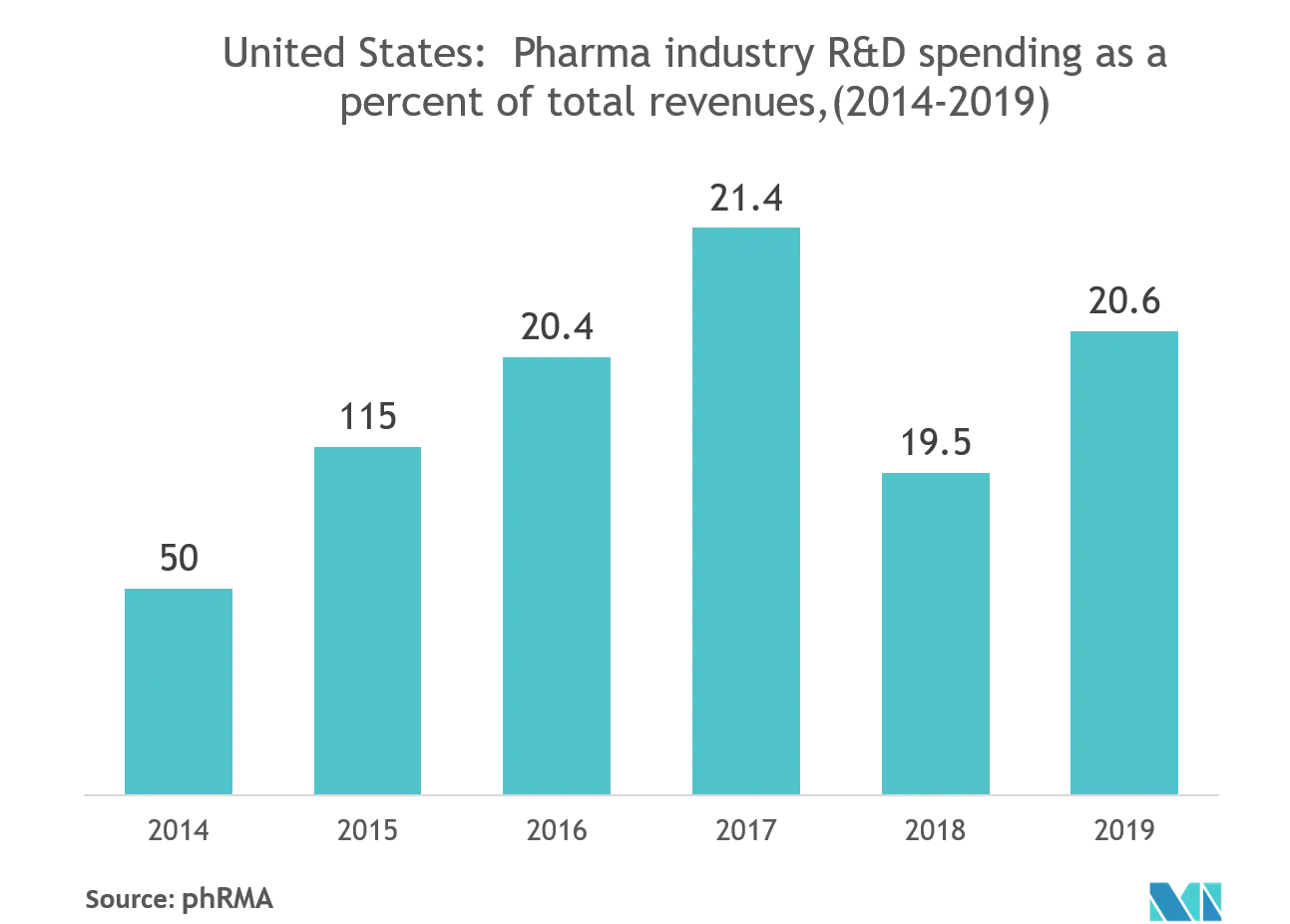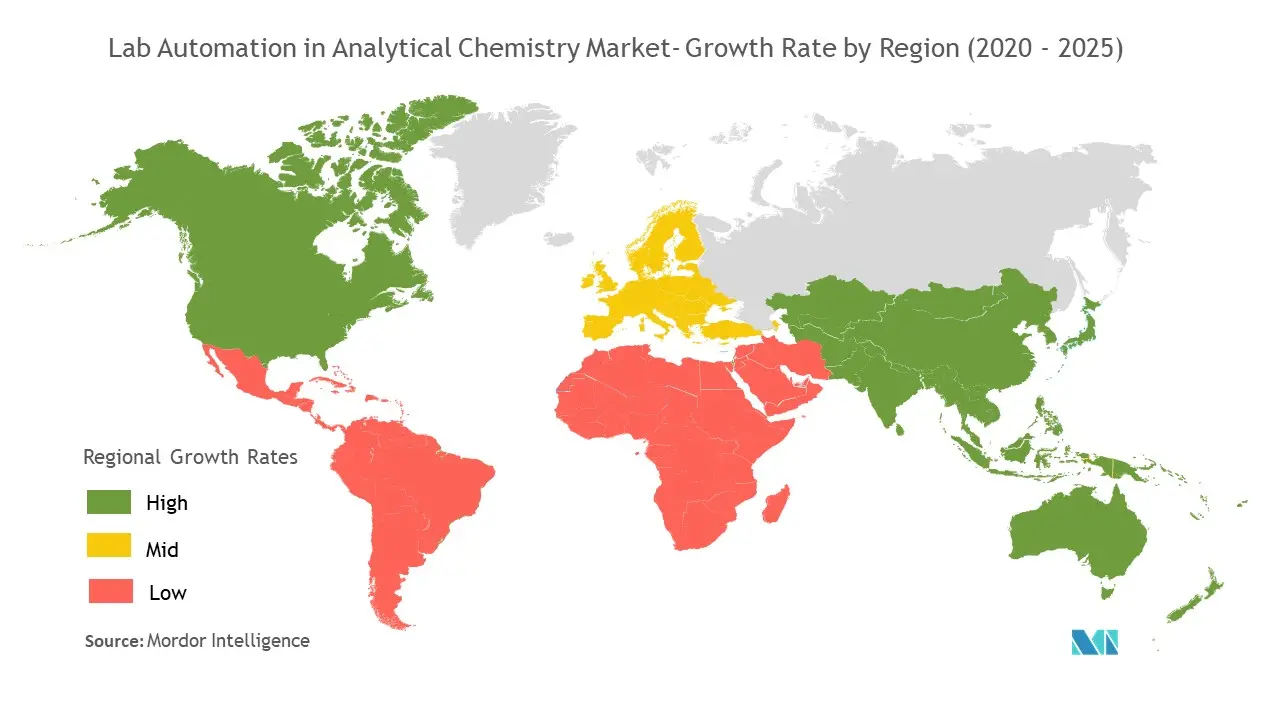Market Trends of Lab Automation in Analytical Chemistry Industry
This section covers the major market trends shaping the Lab Automation In Analytical Chemistry Market according to our research experts:
Automated Liquid Handlers to Hold Major Market Share
- Automated liquid handlers, also known as pipetting robots or pipetting workstations, perform the programmed transfer of liquid volumes between destination and source vessels. These handlers are also capable of performing a vacuum or even magnetic-based separation and mixing.
- The rising demand for faster turn-around times (TAT), higher throughput, and reduced human errors and operational costs are some of the prominent factors driving the adoption of automated liquid handlers across the pharmaceutical and biotechnology industries. For instance, In November 2019, Tecan announced its new Cavro Magni Flex for next-generation automated liquid handling development, mainly intended for low to medium throughput workflows.
- Additionally, advanced liquid handling technologies, such as automated positive displacement pipetting systems, are enabling the users to handle highly viscous to highly volatile liquid types of lower volume ranges and a wider variety of liquid types. Companies, such as Beckman Coulter, launched a wide range of flexible, scalable liquid handling solutions for genomic, cellular, protein, and other workflows. The Biomek 4000 automated liquid handler was launched by the company, to standardize daily pipetting routines, while maintaining sample quality and generating repeatable, reliable results
- Laboratories that increasingly normalize RNA mass for cDNA synthesis and set up qRT-PCR reactions require automated liquid handling, as these assays are largely volume-dependent. Any inaccuracy in volume transfers may hamper the outcome of the results. Such instances are indicative of the fact that automated liquid handlers are expected to witness increased adoption.

North America Hold Major Market Share
- North America has been a pioneer in clinical research for years. This region is home to some of the major pharmaceutical companies, like Pfizer, Novartis, GlaxoSmithKline, J&J, and Novartis. The region has the highest concentration of contract research organizations (CROs). Some of the major CROs in this region are Laboratory Corp. of America Holdings, IQVIA, Syneos Health, and Parexel International Corp.
- Owing to the presence of all the major players in the industry and stringent FDA regulations, the market is very competitive in this region. To gain an advantage over competitors, the companies in this region adopted robotics and automation in labs.
- The inclusion of robotics and automation has been a major factor aiding the transformation of the clinical research industry, owing to which, a total of 339,723 studies with locations in all 50 states and 213 countries were registered in the United States, as of May 2020, as per ClinicalTrials.gov. Moreover, there has been a significant rise in the FDA approvals received in the past few years, owing to automation.
- Moreover, the automation solution providers in the region are on a continuous innovation spree, to integrate a maximum number of clinical equipment. Beckman Coulter, back in October 2019, received 510 (k) clearance from the US Food and Drug Administration (FDA) for its DXA 5000 lab automation system. The solution offers highly consistent turnaround time to physicians using the solution by deploying intelligent routing algorithms to generate an automated patient-centric workflow in the laboratory.
- Similarily, Microbiological labs in the region seek technologically innovative solutions to cope with large numbers of samples and limited personnel resources. Some of the major manufacturers, such as BD Kiestra and Copan Diagnostics Inc., are commercializing partial or complete lab automation systems for bacteriology in the United States.


